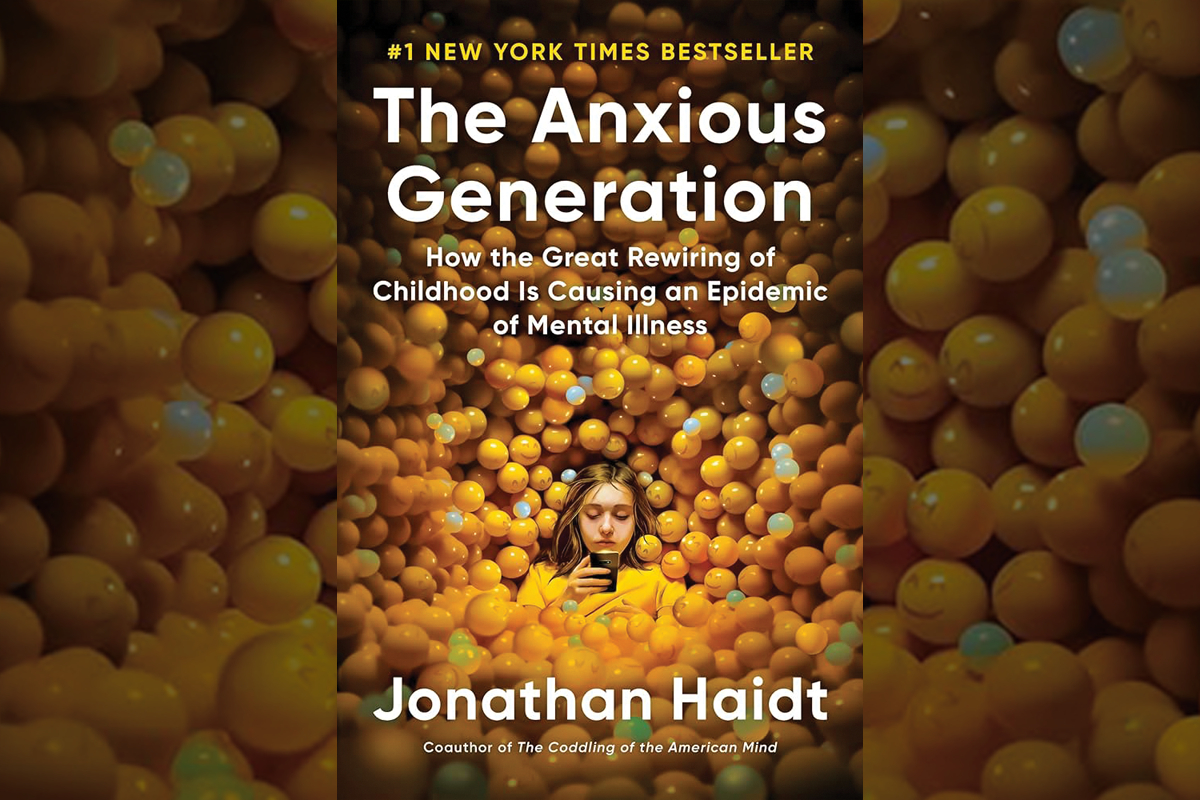‘The Anxious Generation’ — Part 2

Editor’s note: This first part of this review was published in the July 24 edition of The Smoky Mountain News The evidence is clear that social media is not healthy for girls under the age of sixteen.
Psychologist and professor Jonathan Haidt covers this evidence in his book “The Anxious Generation” (2024, Penguin Press, 367 pp), written to address the problems experienced by Gen Z, the first generation to go through adolescence with smartphones.
What is happening with boys? They are also experiencing increases in anxiety and depression, but there seems to be no one main contributing factor, as is the case with social media for girls. His conclusions about boys are “more speculative,” says Haidt, “because we just don’t know as much about what’s happening to boys.”
We do know that boys, as a group, have been experiencing what Haidt calls a “decline in real-world engagement” since the 1970s. Our economy has become more service-oriented and less industrial, a change that favors females. Education rewards those who sit still and listen, again favoring females. There is a decline in male role models, including fathers. The nature of childhood has changed in the direction of more supervision. “A world with too much supervision and not enough risk is bad for all children, but it seems to be having a larger impact on boys,” says Haidt.
Add to these changes the advent of the smartphone and the lure of gaming and pornography, and it’s easy to see potential for problems. For one, as is the question with girls, what are boys missing when they are on their phones? They are missing time for friends and family, sleep and exercise. Life in the gaming world ”is often a daily tornado of memes, fads, and ephemeral micro-dramas, played out among a rotating cast of millions of bit players.” It is no substitute for a community.
When examining the research, Haidt was surprised to find no evidence suggesting that parents ban the use of video gaming. If parents limit time spent, some research has shown that gaming can offer positives, such as improved cognitive function and decreases in depression symptoms. However, some boys, around 7%, become overly dependent and maybe even addicted to gaming, with the accompanying problems of any dependency. Haidt’s conclusions about pornography are less specific. An excess is bound to be harmful, he says. It’s hard to disagree with that.
Related Items
Haidt gives a lot of attention to “safetyism,” the unhealthy elevation of the goal of safety above all other values. Safetyism has risen in prominence since the 1970s. Haidt knows that parenting is hard, and he doesn’t condemn parenting mistakes, but children, especially boys, need to take risks and learn to deal with conflict and frustration. This has been shown to be the case in studies, and might even be easy to fix, if an example at one nearby elementary school is any indication.
Kevin Stinehart taught fourth grade in a school in rural South Carolina. He, as well as parents and other teachers, had been noticing in students a lack of perseverance and an inability to work together. All the adults were worried, but also puzzled over what to do. Then Stinehart attended a conference at Clemson on free play, and he began to make changes for his fourth-graders: time for free play before and after school, and longer recess during school. The results were dramatic, “too huge to ignore,” Kevin reported. Students performed better and had more friends. School bus incidents and trips to the office decreased, significantly. Even truancy decreased.
Haidt compares this story with that of an experiment in another rural school that attempted to “try everything” to reverse the same problems. By “try everything,” they meant more counselors and a curriculum designed to teach improved emotional skills. But adding free play, in addition to being low cost, is more effective and more rapid “because it is nature’s way of teaching these same skills as a side effect of kids doing what they most want to do: Play with each other.” Experience is the better teacher.
It’s beginning to seem obvious, as well, that phones, such powerful sources of distraction and emotional illness, have no place in schools. Most schools say they don’t allow phone use in class. Rules like this have proven to be an inadequate deterrent to phone use. Phones need to be in locked pouches or lockers during the school day. Some parents, understandably, want to be able to contact their child in the case of an emergency. However, a better outcome is likely when the adults at school have the information, and the children listen and pay attention to what is happening.
After discussing what is happening with boys, Haidt includes a chapter, curiously enough, on spirituality. He starts this with some personal information, telling us that he “has felt overwhelmed, personally and perpetually, since around 2014. It feels as if something very deep changed in the 2010s. On college campuses, there seemed to be a shift from discover mode to defend mode. In American politics, things got even stranger.” Researching the causes of this change, he found insight, and help, from spiritual traditions and modern psychology, whose recommendations often converge. Though an atheist, he has concluded that “a phone-based life produces spiritual degradation,” then proceeds to discuss spiritual practices that can help us, “whether we are religious or not, to flourish and connect in our age of anxiety and fragmentation.”
Following the pause for spiritual matters, Haidt gives chapters on what parents, schools, tech companies and governments can do to help turn around what he calls “an epidemic of mental illness” in adolescents.
And finally, in what I see as a marvelous gift of clarity, Haidt repeats what he spelled out in his Introduction: a listing of the four foundational reforms that evidence says would improve adolescent mental health.
• No smartphones before high school.
• No social media before 16.
• Phone-free schools.
• Far more unsupervised play and childhood independence.
This book is getting a lot of attention. That is good news.
(Anne Bevilacqua is a book lover who lives in Haywood County. This email address is being protected from spambots. You need JavaScript enabled to view it..)

















